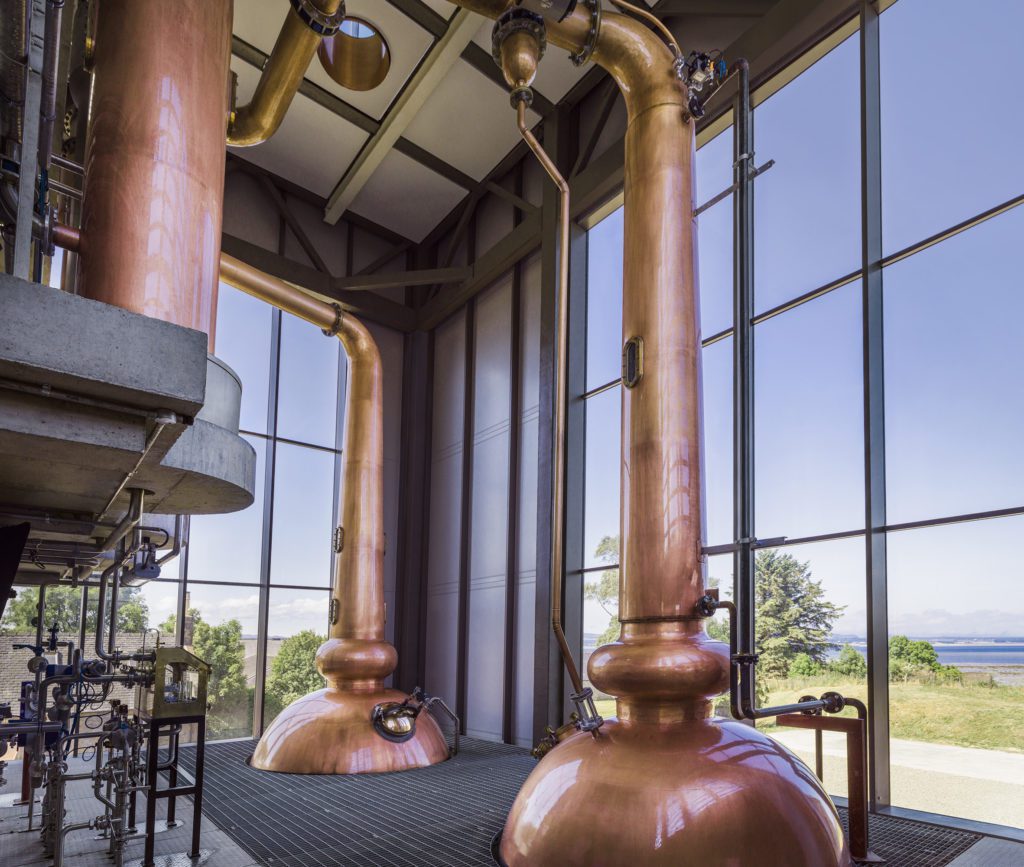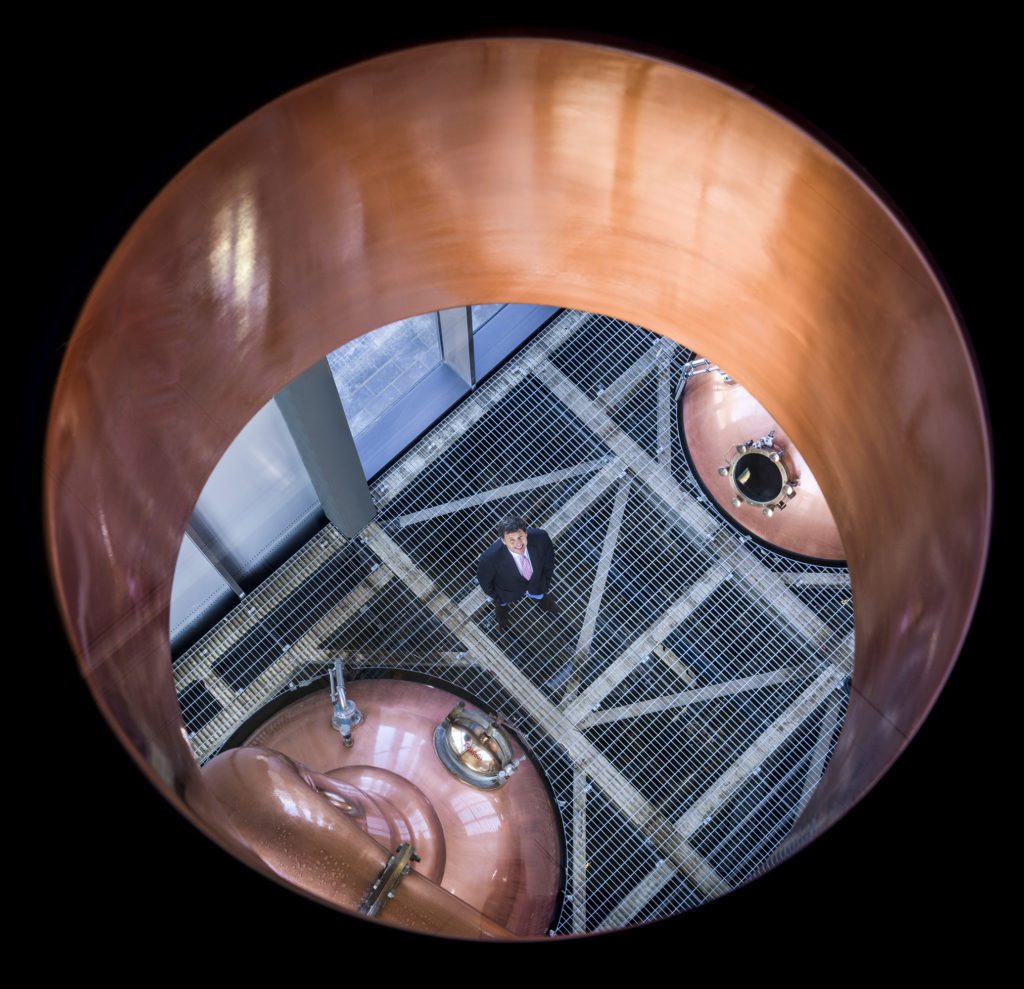If you’ve been in the whisky industry as long as Dr. Bill Lumsden, you’re bound to be well known in your field.
Many whisky creators are - their job seeming like a dream to some and an enigma to others.
And while there is an element of the ‘mad scientist’ in this line of work, not many embrace that role as much as Lumsden, and certainly none have their own multimillion pound lab in which to experiment with new flavours.
“The Lighthouse came about as a result of a bit of banter between myself and the former CEO,” said Lumsden.
“I pretended to him that I was bored. I knew I wasn't, of course, but I just wanted to do something different.
"The end result of this toing and froing, was that he gave me a pot of money to invest and do something different.
"I was already realising that some of the more wacky experiments I wanted to do, I couldn't do in the main distillery, because we didn't have the right type of equipment for that.
"So that was the genesis of it, and it led to the creation of what we now call our late toast experimental distillery.”
Lumsden excitedly continues: “I've always viewed Glenmorangie distillery and Ardbeg distillery as being my large experimental laboratories.
"But I was limited as to what I could do there because we have to produce the standard whiskies in the core rang. Now I've got an actual real, living, breathing full scale experimental distillery to try all these things out in.”

The Lighthouse, which won’t be open to the public, sits at the heart of this ancient Highland distillery, which has been making whisky since the 1800s.
Its very being makes up the fabric of this land, with local farms supplying the barley, and the distillery duly giving back its spent grain to the farmers.
Glenmorangie has also recently launched their Dornoch Environmental Enhancement Project (DEEP) and have been slowly reintroducing oysters into the nearby water.
Named for its landmark approach to whisky, the multi-million-pound Lighthouse distillery is, as you’d imagine, like an actual lighthouse.
The 20m-high glass stillhouse can be seen for miles around, and The Lighthouse’s design is dramatically different from the traditional stone buildings of the main distillery, established more than 175 years ago.
Yet it reflects the single malt’s creativity through and through – even down to the fragments of whisky casks embedded in its walls. Inside stand two of the copper stills which enable Glenmorangie’s delicate, fruity spirit.
As tall as a giraffe, they allow more space for taste and aroma. But these new stills have a host of modifications, making all kinds of innovation possible.
And above the stillhouse is a purpose-built sensory laboratory, where Dr Bill can play with his experiments in the most unexpected ways.
The top floor balcony offers unparalleled views over the Dornoch Firth, and is an enviable space that in another business, may have quite easily been transformed into a bar.
Glenmorangie is owned by the LVMH Group (who also have Ardbeg, Moet, Marc Jacobs and Louis Vuitton), Lumsden hasn’t been stifled by this huge corporate machine, instead he’s flourished and found he has the freedom to be left alone to do his job and keep the creations coming.

The whisky that put Lumsden on the map was Glenmorangie’s Signet, which is made with a roasted ‘chocolate’ malt barley and has lovely coffee notes.
This dram came about thanks to Lumsden’s inquisitive thoughts and eventually experiments around coffee and why it often smells better than it tastes.
While his creations have made his name, and the future looks set to be an exciting place - the team won’t confirm what they’ll release from the Lighthouse, though I suspect a single grain rye may be on the cards - it was the core product, the Glenmorangie 10, that opened Lumsden’s eyes to whisky and its possibilities and it’s this dram that enticed him to the company from Diaego in the 90s.
When asked what people may find surprising about his job, Lumsden harks back to this core product, saying: “Half of my day to day efforts go into trying to make sure that the core range especially Glenmorangie original and Ardbeg 10 year old, are as good as they possibly can be.
"They're very well known products and they've been around for many years. But you know, as well as the more glamorous side of things I do I put a lot of effort into the core range.”
Speaking of the new addition to the distillery, Thomas Moradpour, President and CEO of The Glenmorangie Company, said: “Global demand for Glenmorangie is growing significantly.
"The first of its kind, our Lighthouse experimental distillery is the keystone of our plans to stay at the forefront of taste innovation.
"By giving our talented creation team free rein, we will welcome even more consumers worldwide to enjoy delicious whiskies.”
To mark the Distillery’s opening, Glenmorangie is releasing 3,000 bottles of Glenmorangie Lighthouse whisky.
This has been created with the same bourbon and sherry casks now encased in the new Distillery’s walls.
Aged 12 years and available only at the Distillery, the team say it is a spectrum of flavours that’s a sign of all the wondrous whiskies yet to come.
